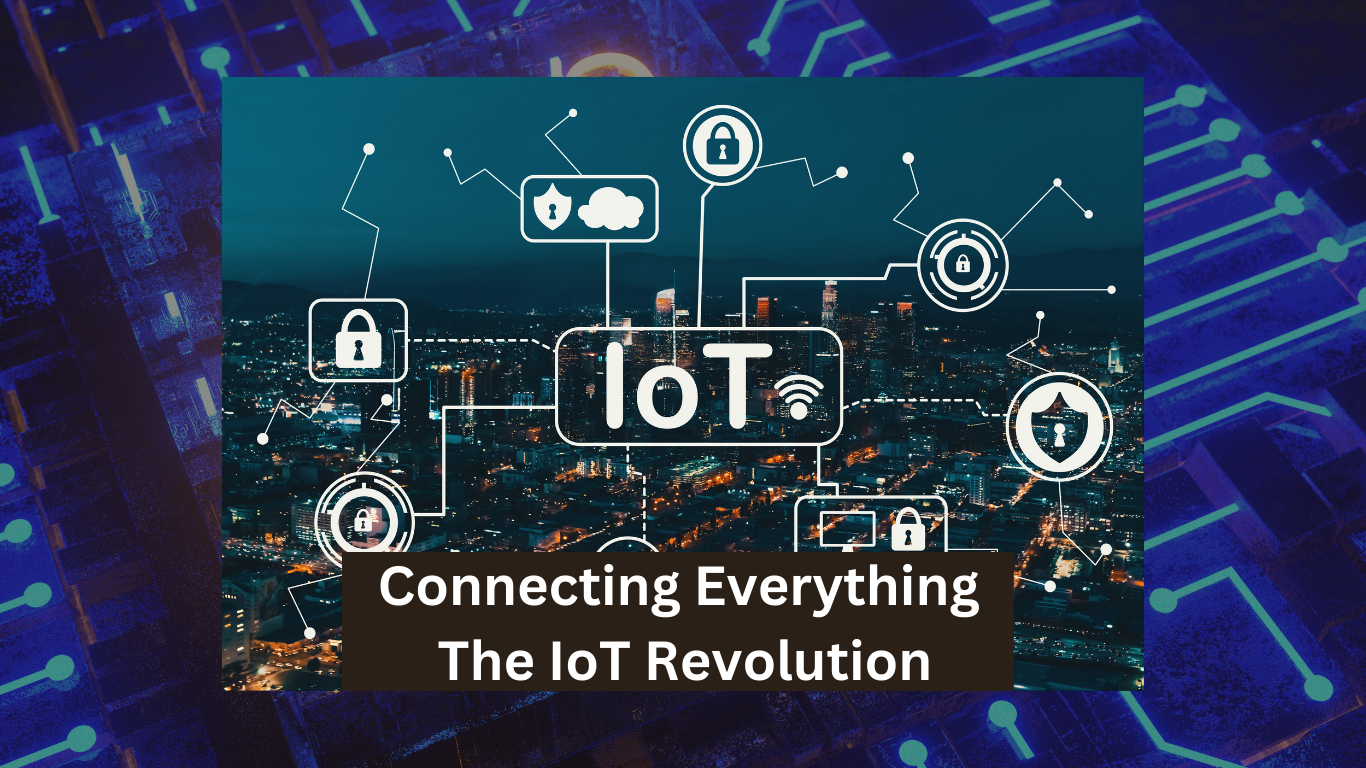Introduction
The Internet of Things, or IoT, is a transformative technological phenomenon that has taken the world by storm. It has revolutionized the way we live, work, and interact with the world around us. The concept of connecting everyday devices to the internet, enabling them to communicate and exchange data, has opened up a vast array of possibilities and opportunities. In this article, we will dive deep into the IoT Revolution, exploring its significance, applications, challenges, and future prospects.
IoT Revolution: A Brief Overview
Before delving into the intricacies of the IoT Revolution, let’s first understand what the term “Internet of Things” actually means. In its simplest form, the IoT refers to the network of physical objects or “things” embedded with sensors, software, and other technologies that enable them to connect and exchange data over the internet. These interconnected devices can include anything from smart home appliances, wearable gadgets, industrial machinery, vehicles, to entire smart cities’ infrastructures.
The Impact of the IoT Revolution
The IoT Revolution has left an indelible mark on various aspects of our lives and industries. Let’s explore some of the key areas where the IoT has made a significant impact:
1. Smart Homes and Connected Living
In the realm of smart homes, the IoT has introduced a new era of convenience and automation. Homeowners can now control their appliances, lighting, heating, and security systems remotely through their smartphones or voice-activated devices. LSI Keyword: “Smart Homes,” “Connected Living.”
2. Healthcare and Wearable Devices
The healthcare industry has embraced the IoT with open arms, utilizing wearable devices and sensors to monitor patients’ health in real-time. These devices can track vital signs, detect anomalies, and provide early warnings of potential health issues. LSI Keyword: “Healthcare IoT,” “Wearable Devices.”
3. Industrial IoT (IIoT)
The Industrial Internet of Things (IIoT) has revolutionized manufacturing and industrial processes. IoT-enabled sensors and analytics have optimized production lines, enhanced predictive maintenance, and improved overall efficiency. LSI Keyword: “Industrial IoT,” “IIoT Applications.”
4. Smart Cities and Urban Planning
With the concept of smart cities, urban centers are transforming into interconnected hubs of efficiency and sustainability. IoT-powered solutions are being used to manage traffic, reduce energy consumption, and enhance public safety. LSI Keyword: “Smart Cities,” “Urban Planning.”
5. Agriculture and Precision Farming
IoT technologies have found their way into agriculture, revolutionizing farming practices. Farmers can now monitor soil conditions, weather patterns, and crop health in real-time, leading to more efficient resource management. LSI Keyword: “Agriculture IoT,” “Precision Farming.”
The Future of the IoT Revolution
The potential of the IoT seems limitless, and its future holds exciting prospects. As technology continues to advance, we can expect the following developments in the IoT space:
1. 5G and Edge Computing
The advent of 5G networks will significantly enhance IoT capabilities by providing faster and more reliable connectivity. Additionally, edge computing will reduce latency and enable faster data processing at the device level. LSI Keyword: “5G IoT,” “Edge Computing.”
2. AI and Machine Learning Integration
Artificial Intelligence (AI) and Machine Learning (ML) will play a crucial role in the IoT Revolution. These technologies will enable devices to learn from data patterns and make autonomous decisions, leading to greater efficiency and automation. LSI Keyword: “AI in IoT,” “Machine Learning Integration.”
3. Enhanced Cybersecurity Measures
As the number of IoT devices grows, so does the need for robust cybersecurity measures. Future developments will focus on enhancing IoT security to safeguard against potential cyber threats. LSI Keyword: “IoT Cybersecurity,” “Enhanced Security Measures.”
4. Interoperability and Standardization
Efforts towards standardization and interoperability will be crucial to ensure seamless communication between various IoT devices and platforms. This will unlock the full potential of the IoT and drive widespread adoption. LSI Keyword: “IoT Interoperability,” “Standardization Efforts.”
FAQs (Frequently Asked Questions)
Q: What is the IoT Revolution?
The IoT Revolution refers to the paradigm shift brought about by the widespread adoption of the Internet of Things. It involves connecting everyday objects to the internet, enabling them to communicate and exchange data, leading to enhanced automation and efficiency.
A: What are some examples of IoT applications?
There are numerous IoT applications across various industries. Some examples include smart homes with connected devices like smart thermostats and voice assistants, healthcare wearables that monitor patients’ health, and industrial IoT solutions optimizing manufacturing processes.
Q: How does the IoT impact everyday life?
The IoT has transformed everyday life by providing greater convenience and automation. It allows individuals to control their homes remotely, receive real-time health monitoring, and enjoy the benefits of smart cities with optimized services.
A: What are the challenges associated with the IoT Revolution?
While the IoT brings tremendous opportunities, it also faces challenges like cybersecurity threats, data privacy concerns, and the need for standardization to ensure seamless communication between diverse devices and platforms.
Q: What role will AI and Machine Learning play in the IoT’s future?
AI and Machine Learning will play a pivotal role in the IoT’s future by enabling devices to make autonomous decisions, analyze complex data patterns, and enhance overall efficiency in various IoT applications.
A: How will 5G and edge computing impact the IoT?
The advent of 5G networks will provide faster and more reliable connectivity, while edge computing will reduce latency and enable faster data processing at the device level, enhancing the IoT’s capabilities.
Conclusion
The IoT Revolution has brought about a transformative change in how we interact with technology and the world around us. From smart homes and connected living to industrial IoT applications, the impact of IoT is far-reaching. As we look towards the future, advancements in 5G, AI, and cybersecurity will further propel the IoT’s growth and potential. Embracing the IoT Revolution presents us with endless opportunities to create a more efficient, interconnected, and sustainable world.

[…] we can look forward to even more innovative features and eco-friendly initiatives. Embracing the IoT revolution will undoubtedly shape a brighter and more efficient future for our […]
[…] voice-activated control to energy-efficient management, HomeAI Tech transforms houses into smart, connected living […]